 |
O R A C L E O B S E R V A T O R Y Report 28 February - 2 March 2009 |
|
|
The weather forecasts for 28 February to 2 March were widely varied up until the morning of 28 February. Some weather sites said it would be clear, some called for partly cloudy skies, and one even said it would be cloudy. Even the Clear Sky Chart was varying daily. The night before I had finally decided I would not go; but when I woke up on Saturday morning, 28 February, the forecasts were generally good. So I decided to give it a try since, due to new home construction activities and bad weather, my last visit was three months ago. I packed up and headed up the road for the 25-minute drive to Oracle (so much nicer than the 8 hours it would take when coming from California!). I took my 8" LX200-ACF (only its third time out!) and my PST (Personal Solar Telescope).
I arrived at 1330 MST to mostly clear skies (there were some high cirrus clouds in places), with the temperature at 75°F. It was breezy however. I initially checked in with construction progress (discussed on the "Road to Oracle" blog). I finished setting up at 1530 MST:
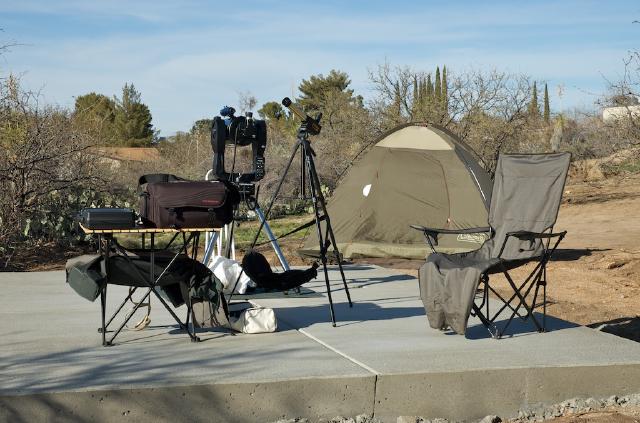
As you can see in the photo, I set up on the new observatory pad. I was anxious to try it out. It worked great!
I viewed the sun with the PST. No sunspots were visible, but there were two nice prominences visible. By 1730 MST there were clouds from the southwest, northward to the northeast. The temperature had dropped to 70°. The clouds made for a nice sunset at 1821 MST (63°F):
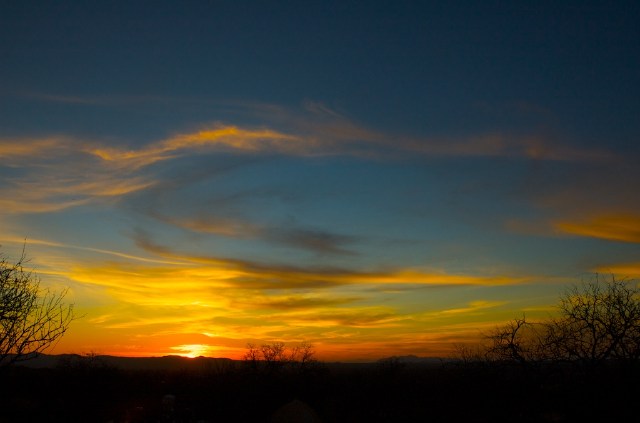
The moon (top) and Venus (bottom) were visible through a large hole in the clouds:
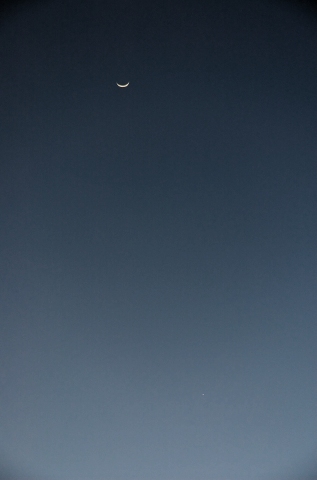
Sunsets are nice in Oracle!!!
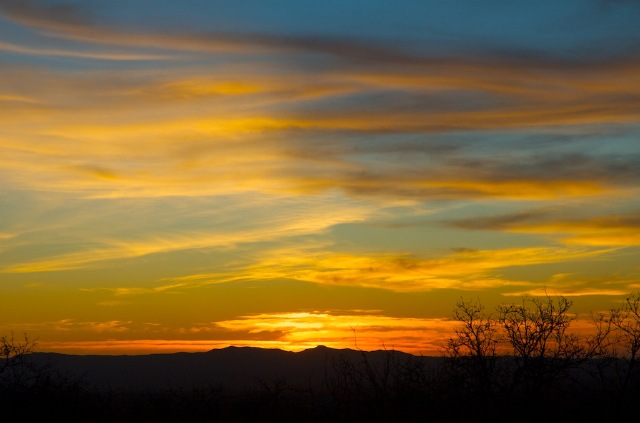
This view is to the north (our new home is at the right edge):
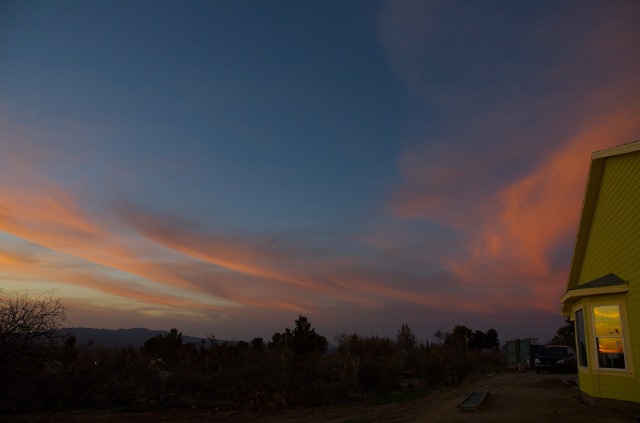
This view of the moon was taken with a 300mm telephoto lens on my Nikon D70 DSLR. It was handheld (the lens has a vibration reduction capability).

Sunset progressed very nicely!
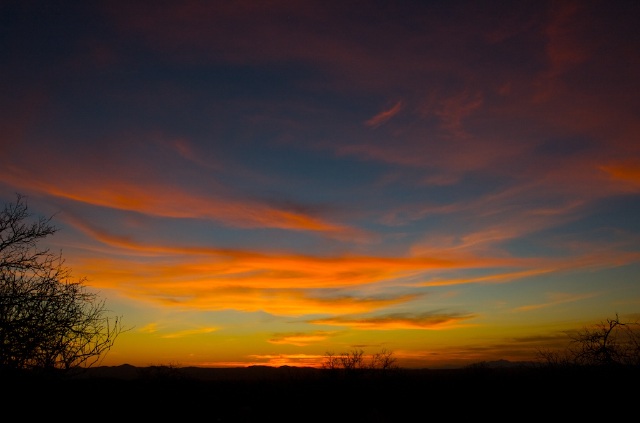
I took advantage of a hole in the clouds to take some photos of the moon at prime focus of the 8" telescope. The first photo below (1/125sec, ISO 800) is at prime focus, and the next three (1/30sec, ISO 800) added a 2X Barlow Lens.
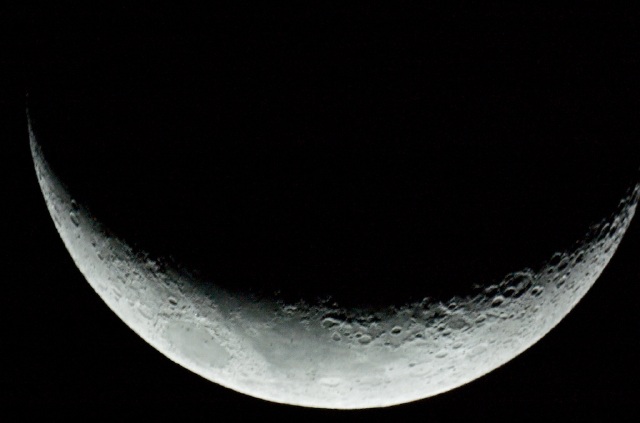
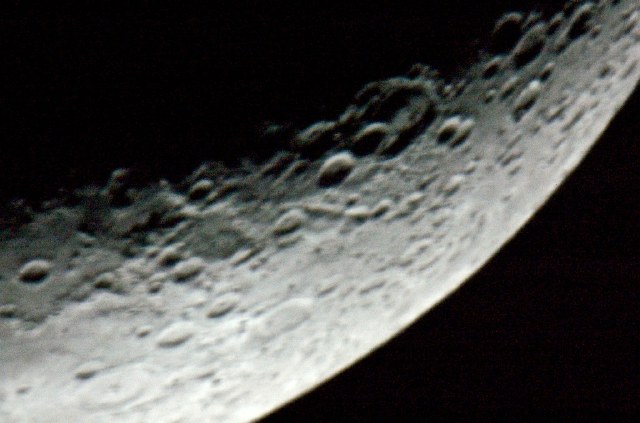
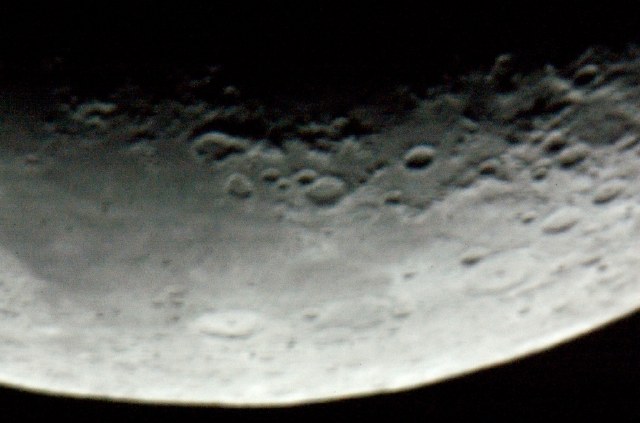
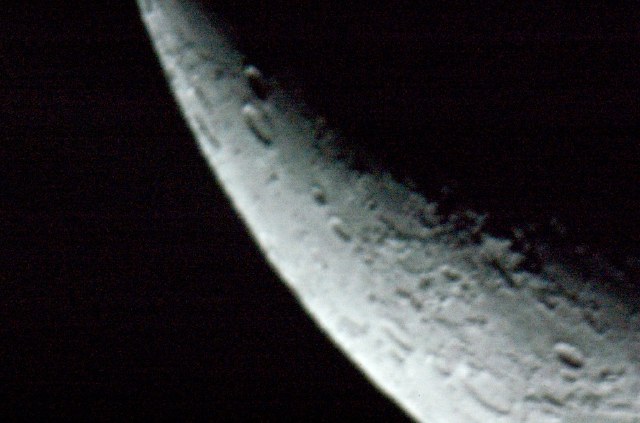
And here is Venus at prime focus with a 2X Barlow Lens (1/500sec, ISO 1250):
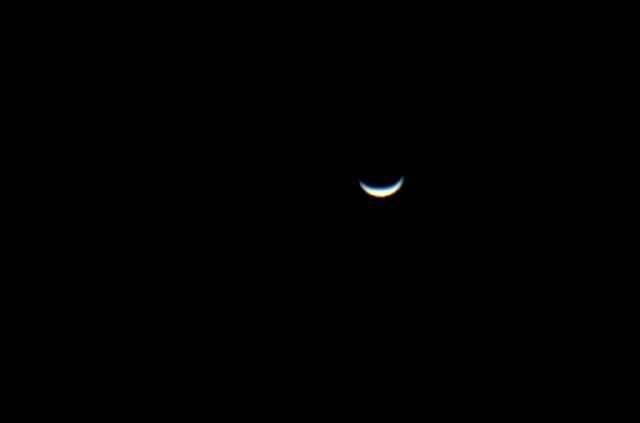
Both the moon and Venus showed nearly the same phase tonight!
By 1920 there were still lots of clouds in the sky, so I decided to not power up the telescope quite yet. However, that didn't keep me from looking at some objects. I just pointed it at the moon, Venus, and M42 (the Great Nebula in Orion). I used a 26mm eyepiece (yielding a magnification of 77X) and spent some time looking at each object. I then looked at Comet Lulin, which was faintly visible high in the sky. In the telescope with the 26mm eyepiece, it appeared as just a "fuzzball" with no visible tail. At 1947 MST, I noticed that even with the moonlight, the Winter Milky Way was becoming visible. Nice to be at a dark site!
At 2000 MST the clouds were less of a factor so, I powered on the 8" telescope and aligned it. I then looked at Saturn, which was low in the east. Right now the ring system is nearly edge-on, which makes a unique view of Saturn. The rings look like a line across the planet's disk, extending beyond the planet on two sides.
I then tried for M51 (the Whirlpool Galaxy) and M101 (Pinwheel Galaxy), but they were both too near the horizon at this time for good viewing. I was able to view the galaxy pair M81 and M82 however. These two galaxies make a nice view when you use a low power or wide-angle eyepiece and have them both in the same field-of-view.
I then looked at Comet Lulin with a 30mm 2" wide-angle eyepiece (67X). This time the comet's tail was visible, extending across the entire field-of-view. Very nice.
By 2045, the cloud cover had quickly returned. There was no good viewing anymore, so I "parked" the telescope (a mode that allows a quick startup later) and retired to the "astronomer's quarters" (my tent) to listen to "Tales of the Texas Rangers" on my iPod.
At 2215 MST, temperature still 60°F, I came back outside and saw clear skies. Even though it was somewhat breezy, I began doing some astrophotography. First, I did some testing with a new Spike-a™ Bahtinov Mask. You can read my report on it here. After my tests I took a photograph of Comet Lulin. This is a 2 minute exposure (ISO 1250) at prime focus with an Antares f/6.3 SCT Reducer/Corrector:
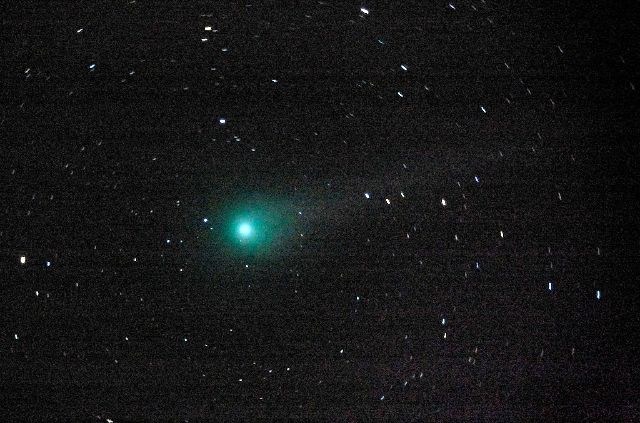
You can just see the tail extending to the right. Neat!
Unfortunately, you can also see the effects of "field rotation" (star trailing) in the image. It is caused by doing long exposures with a telescope mounted in Altitude/Azimuth mode, and the field of view rotates at the telescope moves to track the sky motion (from the earth's rotation). One of these days, I really must get an equatorial wedge for the LX200. That would eliminate the field rotation.
Here is M51 (Whirlpool Galaxy). This is a 5-minute exposure (ISO 1250) at prime focus with the focal reducer.
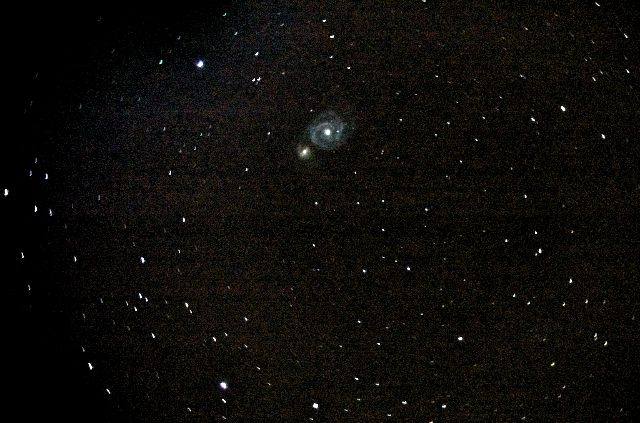
I then went to the galaxy M82. That's it at the top of this photo (5 minutes, ISO 1250, prime focus, focal reducer):
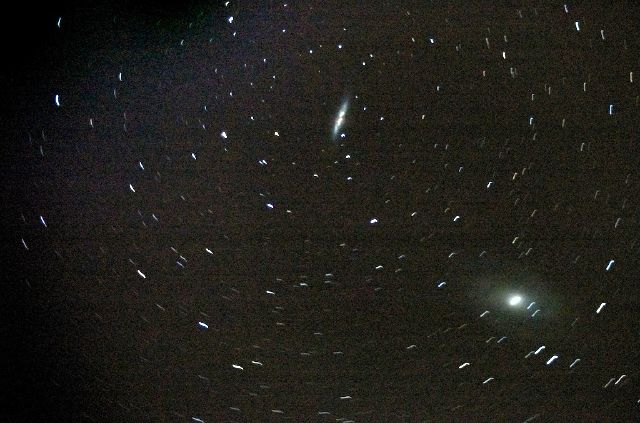
Nice that you can see some structure and color, even at this scale. And in the lower righthand corner is the M81 galaxy, slightly trailed due to the field rotation. Next trip to Oracle Observatory I will take photos of M82 and M81 without the focal reducer, which will increase the image scale.
At 0015 MST, temperature 59°F, although it was still clear, it had become too breezy for any more viewing or astrophotography. I closed up for the night.
I woke up at 0430 MST due to some strong winds blowing. It was still clear. I woke up again 0630; it was still clear but still very windy with some very strong gusts. It stayed mostly clear but very windy until 1600 MST! My poor tent was really taking a beating in the wind. At times, DIRT (not dust) would be blowing around me! Fortunately, I had all my equipment covered up and secured from the wind. At sunset the wind was finally calm.
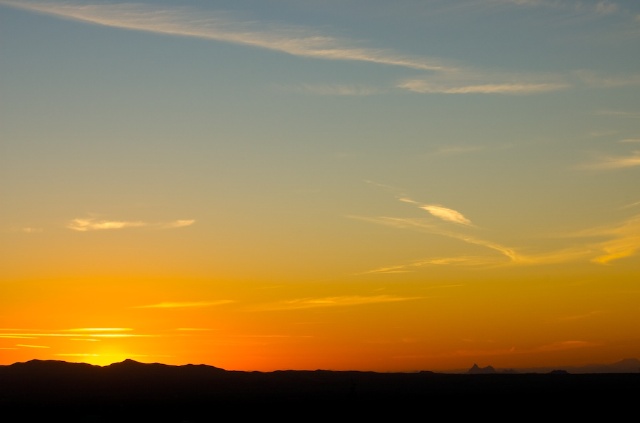
Here is tonight's moon, first with the 300mm telephoto lens, and then at prime focus in the 8" telescope with the focal reducer:
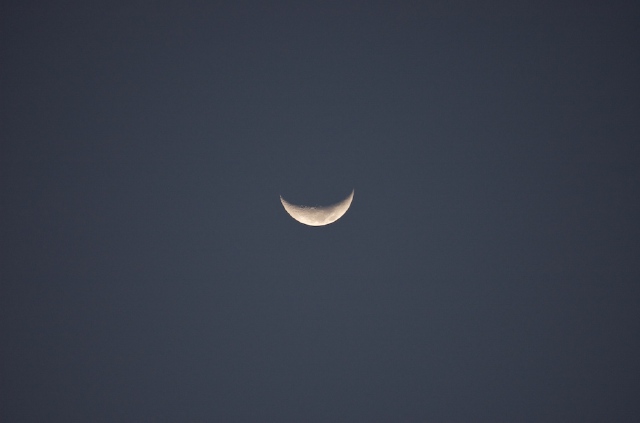
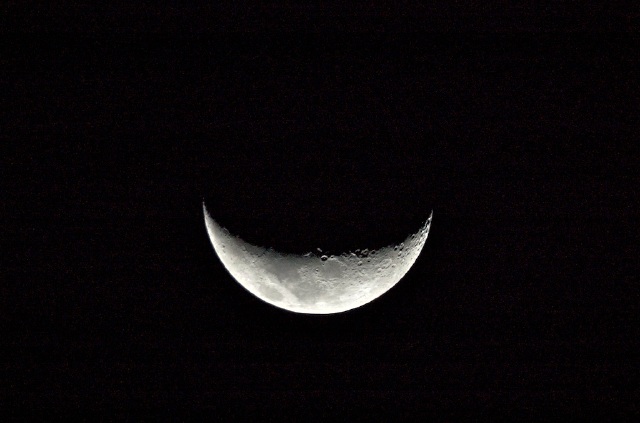
Unfortunately, during the day I started to get a headache, which by 2030 MST, had become uncomfortable enough to keep me from doing any observing. So I turned in. I did get up at 0200 MST and came out of the tent. The sky was clear so I just sat under the stars for about 30 minutes, with the temperature a nice cool 50°F. After enjoying just looking at the night sky, I returned to the tent for some more sleep.
I got up at 0630 and began packing. After I finished packing I stayed at the site to check on the new home construction activities. I finally left Oracle at 0930. All-in-all, it was a nice visit to Oracle Observatory.
Return to the Oracle Observatory Main Page.